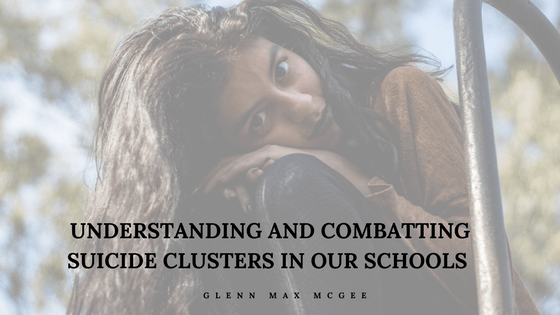In recent years, suicide has become one of the top five causes of death worldwide for children between the ages of fifteen and nineteen. In many cases, one death by suicide begets another and just this past year school districts in California, Ohio, Arizona, and Utah have experienced suicide clusters. In fact, Utah’s Governor Herbert recently announced a task force to study the issue, noting, “The youth suicide rate in Utah has trended upward in recent years, growing at an average annual rate of almost four times faster than the rest of the nation. Youth suicide is now the leading cause of death among these young people.”
Why are these suicide clusters happening and how can schools and community help to combat them?
Causes
Suicide clusters—defined as multiple deaths in close succession and proximity—feed on viral news generated from a myriad of social media connections. Because teens are so highly influenced by social networks and vulnerable to media and their peers, sometimes seeing an article or a post about another student who died by suicide can lead them to do the same. While the media is discouraged from using too much detail or graphic imagery, teens are still extremely easily influenced by what they read and see on the news, or in their Instagram and Snapchat feeds and streaks. Teens are especially vulnerable because of social modeling. So many struggle to find an identity and thus model their behavior after other kids they admire. They may model themselves after someone whose behavior is destructive or they may become depressed because they cannot live up to the models they or their parents think they should be with perfect grades, great athletic ability, and wildly popular.
Depression and related mental health are also at the heart of many student deaths. If adolescent depression is treated as just a temporary problem or deteriorating mental health is perceived as “just a phase,” students are at significant risk of self-harm or suicide. One sign of these issues is a change in sleep patterns, particularly sleep deprivation as I discussed in an earlier blog.
Solutions
So, what are the solutions to this horrific epidemic? Suicide is a complex issue requiring multiple faceted solutions from schools, parents, and whole communities.
Vigilance tops the list. Students, teachers, and parents need to note changes in behavior patterns and take them seriously. While they cannot be expected to solve the problem, they can and must refer the student to a counselor or community resource or hotline. Vigilance includes a careful watch on social media. In the majority of cases, there was some clue in a posting that a student was prepared to die by suicide.
Access. Also, our teens need ready and ample access to wellness counselors and facilities. In Palo Alto we created physical wellness centers at both high schools and assured they were staffed by trained wellness workers. Troubled students also need access to community mental health resources.
Caring Trusted Adult. Students need to be able to connect to a caring adult at school. While most educators, myself included, may think that each of our students have someone at school whom they trust enough to talk with when they are facing problems, survey data tell us otherwise. In Palo Alto we were surprised to learn that despite our best efforts with advisory programs and wellness training and supports, more than 25% of high school students surveyed indicated they could not identify a caring, trusted adult at school.
Means Restriction. The leading means of youth suicide is gunshot and it is also the most fatal means. Having a gun in a home increases the likelihood of suicide threefold. Other means include access to drugs and hotspots which are locations that have been used in the past be they railroad tracks or bridges.
A student’s death by suicide has a devastating impact on family, friends, and faculty. School cultures must strive to focus on social, emotional, physical, and mental health as much as on academics. They must make youth well-being a priority and be aware of unintended pressures of grades, homework, and overscheduling. Wellness supports need to be as prevalent as academic supports. By connecting each child with a caring adult, being vigilant, providing access to wellness supports and preventing access to means we can help troubled students get through their toughest times.

